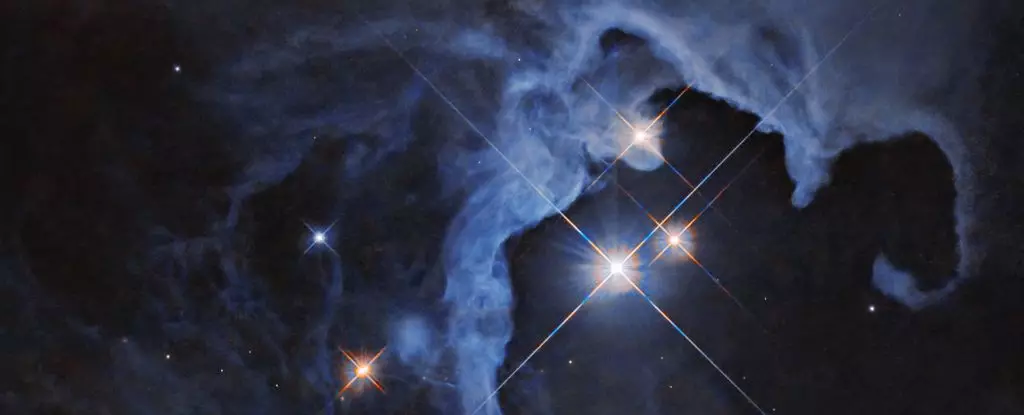The age-old question of whether Earth harbors the only intelligent life in the vast universe remains one of humanity’s most tantalizing mysteries. While our observations thus far suggest a lonely existence, there are multiple contenders for why we have encountered no signs of extraterrestrial civilizations elsewhere in our galaxy. As we seek to chart this grand cosmic narrative, understanding the intricacies that shape our universe and influence the development of intelligent life becomes imperative. A leap forward in this exploration comes with the introduction of a new variable into the Drake Equation—a tool devised to estimate the number of advanced civilizations we might expect to find. The pioneering work of physicist Daniele Sorini and his team at Durham University sheds light on an often-overlooked aspect: the impact of dark energy on stellar formation rates.
Dark energy is an elusive concept that weighs heavily on cosmological theories. Making up about 71.4 percent of the universe’s matter-energy content, dark energy drives the accelerated expansion of the cosmos. Despite our inability to pinpoint its exact nature, we recognize its omnipresent influence. Sorini emphasizes that understanding dark energy’s role in the universe is not just a scientific challenge; it may also elucidate the very conditions that led to human existence. By acknowledging the significance of dark energy, the latest research posits that the universe’s stability and propensity for star formation go beyond mere gravitational forces.
At the heart of life’s emergence is the formation of stars—intense nuclear reactors that provide the conditions crucial for planet formation and, potentially, life itself. Traditionally, our understanding suggested that certain ideal conditions must prevail for stars to flourish efficiently. The current research unveils a key finding: the efficiency of star formation in relation to varying densities of dark energy. Sorini’s team posited that an optimal level of dark energy would yield a 27 percent conversion rate of matter into stars. Remarkably, this rate contrasts with our existing universe, where only 23 percent of matter converts efficiently into stars. This discrepancy introduces doubt about the presumption that our universe is uniquely conducive to the origins of life.
Surprisingly, the realization that we do not inhabit the most statistically favorable universe for star formation hints at an intriguing possibility—that intelligent life may not be as rare as once believed. The implications of Sorini’s work indicate that improved conditions in a hypothetical universe could very well support a greater number of intelligent civilizations, raising the likelihood that life exists elsewhere. Each discovery brings us closer to a critical re-evaluation of what constitutes favorable conditions for life, expanding our considerations beyond mere star counts to include the effects of dark energy.
While the research emphasizes the significance of star formation rates, it must be noted that many other variables are at play in the cosmic game of life. The presence of planets around these stars, the potential habitability of those planets, and even the unknown mechanisms by which the building blocks of life arrive and evolve are crucial components that shape the likelihood of intelligent life emerging. The web of interdependencies extends outward, causing scientists to piece together an intricate puzzle, yet many parts remain shrouded in ambiguity.
As we traverse this complex landscape, each new study serves as a stepping stone, enhancing our understanding of potential life-sustaining environments nestled among the stars. By integrating dark energy’s role into the larger equation, we inch closer to redefining our approach to cosmic exploration. With advancements in technology and observational capabilities, there lies a growing excitement about our possibilities to investigate other star systems in our galaxy. This enhanced understanding not only aids our search for extraterrestrial intelligence (SETI) but may also shift the trajectories of our exploration strategies.
The exploration of life beyond Earth sends humbling ripples throughout the scientific community. As we come to grips with the implications of dark energy on stellar formation and the circumstances that birthed intelligent life, we harbor a deeper intrigue for the universe that envelops us. Each stroke of knowledge paints a broader narrative—one that could lead us to discover civilizations yet lost to time, scattered across the vastness of our cosmic home. The journey is not merely to find life but to continue unraveling the mysteries that challenge our understanding of existence itself.


Leave a Reply